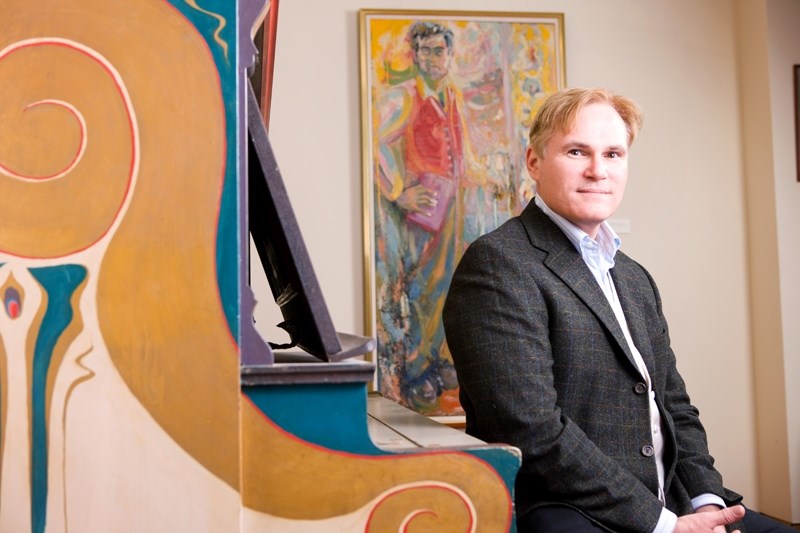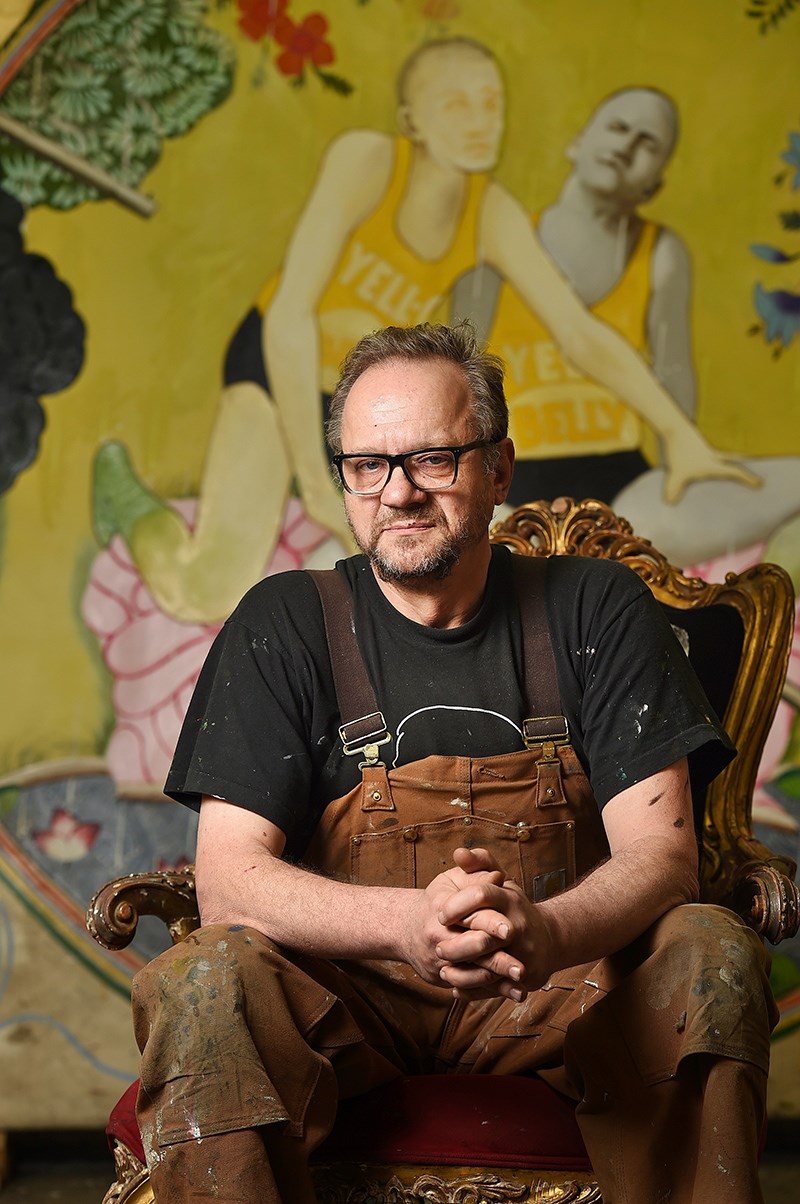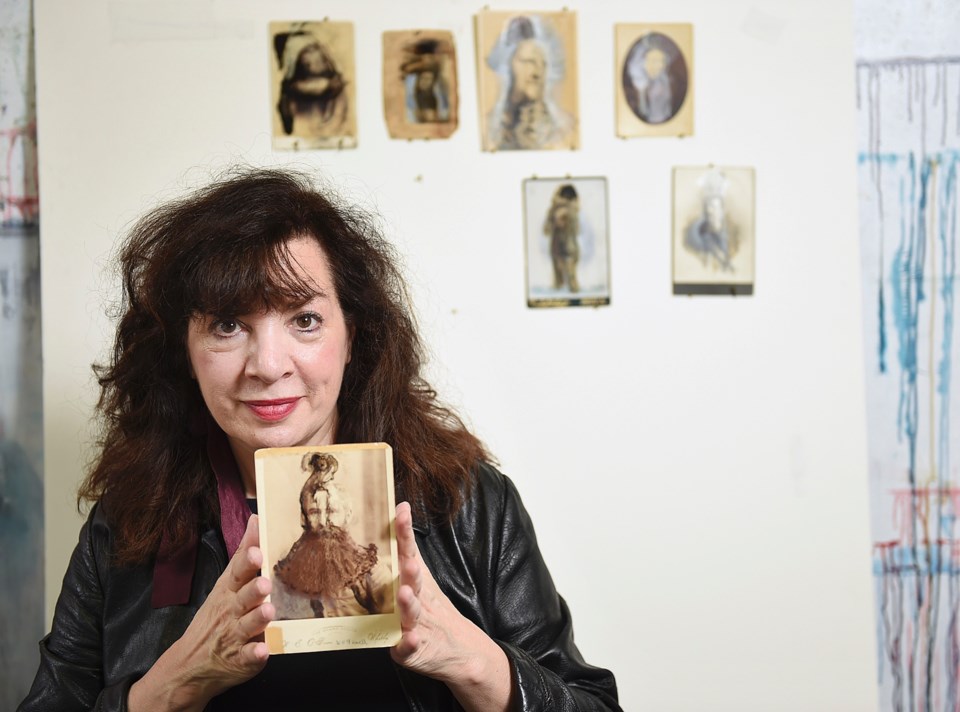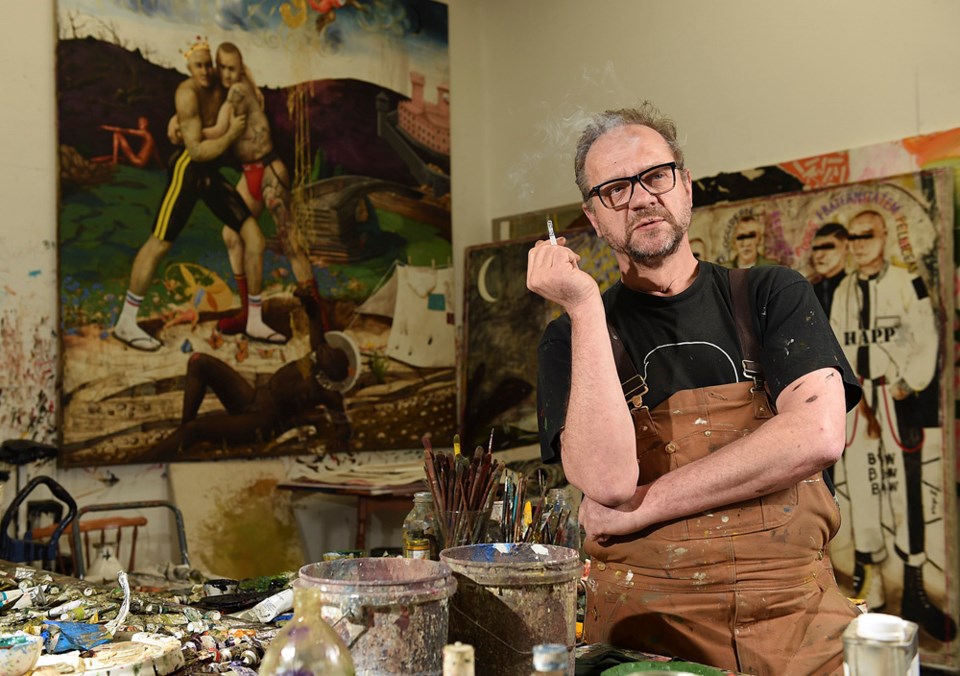As the world mourns the massacre of nearly 50 people at a popular gay nightclub in Orlando last weekend, the spectre of fear, ignorance and hate hangs heavily in the air for the global LGBTQ community.
It is a sadly familiar perfume.
And while it remains to be seen how the world will respond to this fresh horror, locally, the Queer Arts Festival has already posited that it is often the role of artists to respond to and confront tragedies such as this, using the rawness of their work to further our emotional understanding and accelerate change within society.
That is the philosophy at the centre of Drama Queer: seducing social change, the festival’s visual arts exhibition, running June 21-30 at the Roundhouse Community Centre, curated by world renowned queer activist and scholar Jonathan D. Katz.

Katz, the founder of the Harvey Milk Institute in San Francisco and the first curator to place an openly gay art exhibition in a major American museum, has gathered together a collection of works by artists who have spent their lives documenting and dialoguing with the historical injustices and inequalities – be it homophobia, civil rights abuses, the AIDS epidemic – of their time. Works by Del LaGrace Volcano, Kent Monkman, Andreas Fuchs, George Steeves, Monica Majoli, Vika Kirchenbauer, and Carl Pope will sit in conversation with at least a dozen more artists who are known to “queer the perspective” of their audience and “seduce” them into seeing the world a different way.
In an added political layer, the timing of the exhibition this year – in late June rather than July – is meant to coincide with the anniversary of the Stonewall Riots: three days of riots in 1969 New York that are credited with kickstarting the modern queer civil rights movement and the international phenomenon of pride parades.
Stonewall is not the theme of the visual arts show, but the emotion behind it is.
“What the exhibition wants to do is get at the role of emotion generally. We always talk about activism and politics as if there isn’t an emotive component to it. But it is of course the emotion that is the motor for all of this,” says Katz, speaking by phone from New York, prior to his arrival in Vancouver for the show. “We were looking for work that had powerful, complicated emotion, that appealed not only in formal terms but, if you will, to the gut.”
To accomplish that, Katz has centred the exhibition around three never-before-shown paintings by Attila Richard Lukacs. The Vancouver-based artist is best known for his sexually charged, arrestingly intimate figurative paintings of skinheads. Larger than life, with suffering, lust and rebellion laid bare, the work evokes the likes of Rembrandt, Caravaggio, Goya, Degas and Klimt.
Katz readily refers to Lukacs as one of the world’s greatest living artists, however, he hints that the subject matter that catapulted him to international acclaim (Elton John is a collector) also shackled him with controversy.
“To me he’s one of the three or four best painters in the world, and I think it’s fair to say that if his subject matter were different, his career would be different,” says Katz. “I’ll just leave it at that. He’s still famous, but he’s not achieving the stratospheric prices that an idiot like Jeff Koons can achieve.”

ANARCHIST ART
Seated in a rocking chair in his cavernous East Vancouver studio, a Northfield cigarette in hand, Lukacs strikes a more indifferent air.
“The male homosexual figure was a difficult subject to deal with for people in the ‘80s and ‘90s, as progressive as we think it was,” Lukacs says, simply.
Prior to his move back to Vancouver (he attended Emily Carr in the ‘80s), Lukacs had lived for years in New York and before that West Berlin, where he discovered the art scene and sex clubs that would fuel his work.
“I had the uniform. I ran around as a SHARP [Skinheads Against Racial Prejudice]. I went to the meetings and the sex clubs in London and Amsterdam and got my boots licked and I licked boots!” he laughs, with a nostalgic shrug. “All of the fun stuff that went with my paintings. That’s the information that fed my paintings then.”
At 54, he says he doesn’t do the boots and the skinheads anymore. He’s developed more of an affinity for the abstract, playfully pointing out a glory hole on a canvas in front of him where only a red circle can be seen.
He’s also overcome a disastrous meth addiction.
But it was his unflinchingly brash, fetishized portraits in the ‘80s and ‘90s that inspired a generation of queer artists after him, and paved the way for wider political acceptance.
“I think the idea of doing the gay subject matter and skinheads [was] to make people deal with it,” says Lukacs. “Remember, it was when Reagan was denying AIDS. [This said], ‘We exist and you have to deal with us,’” he continues. “And putting it in front of people’s faces in an art-historical context was a way for them to swallow it. As a painter, as an artist, our vocabulary is with our brush and our images and how we bring it to the viewer. And that was my fight. The underlying anarchist current of my work was, like, gay sex exists.”
SENSUAL FEMINISM
Meanwhile, Angela Grossmann came to Drama Queer because of Lukacs, whom she counts as a dear friend from their time together at Emily Carr. Grossmann had recently done a show based in gender identity, erotica and feminism, and Lukacs brought Katz by her studio in Gastown to look at the work.
A Vancouverite by way of London, the internationally adored collage and mixed media artist explains that while she has no direct ties to the Queer Arts Festival or LGBTQ community, their world views seem to often overlap.
“I’m not part of the queer community but I was extremely involved with others who are. [And] my work seems to be speaking to it,” she muses, looking around her charmingly disheveled workspace. “The work very clearly speaks to the issues that [the festival] is interested in addressing.”

Grossmann first caught the attention of the art world as a student, being named one of the Vancouver Art Gallery’s infamous “Young Romantics” in 1985 alongside Lukacs, Graham Gillmore and Derek Root. Twenty years later, students from 11 of the UK’s leading art schools voted her onto a list of their 100 most influential and inspirational artists.
For the show, Katz selected a series of gender-bending collages that weave male and female identity together, as well as a number of vintage postcards, modified through Grossmann’s distinct gestural process to tell a subversively sensual new story.
“There’s all kinds of different ways to make art, and a lot of the work I love isn’t necessarily sensual, but my particular thing is fairly sensual,” says Grossmann. “Just because a work is sensual, or about sensuality, doesn’t mean that it’s not thoughtful and possibly intelligent. And I’ve always been extremely clear when I teach that those things aren’t mutually exclusive.
“I am now very out there about the sensuality in my work,” she continues, “which allows me to make the statements that I do, which allows me to be in the Queer Art show. Because it’s about other ways of thinking and other ways of expressing that.”
And while she debates the accuracy of calling her an activist (“Activism means that by doing your activity you’re causing an effect, and [...] honestly I spend my days alone in a room.”), she admits with a hearty smile that, if it is so, she comes by it naturally.
“I think art is activism, and making art is somewhat a political act. I come from a very political family, so it was never a question. It’s brewed in me, dyed in my wool,” she says, with a laugh. “I don’t even think about it, really. I’m sure there are some conservative artists out there [...],” she pauses to think, “but I’m not sure I would consider that art.”
• Drama Queer: seducing social change opens June 21 at 7pm at the Roundhouse Exhibition Hall and runs until June 30.


